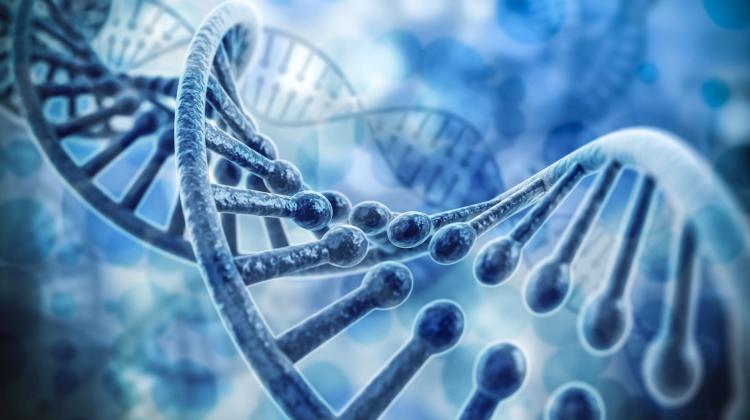Geneticists have investigated the biological origin of Mazovian princes

Geneticists from Szczecin examined the remains of the early 16th century Mazovian princes Janusz and Stanisław. The researchers determined that one of these members of the Piast dynasty had a haplogroup of the Y chromosome characteristic of the Germans or Celts.
"We were able to isolate the DNA from the teeth and the femur of Prince Janusz and identify the haplogroup of the Y chromosome as the group R1b, commonly called Celtic or Atlantic" - said Dr. Andrzej Ossowski from the Department of Forensic Genetics at the Pomeranian Medical University in Szczecin.
As the geneticist explained, haplogroups are characteristic for people from a particular region. "Based on the determination of the mitochondrial DNA and the male DNA - that is, Y - haplotype we are able to determine with high probability from which part of Europe the given person had originated" - he added.
Ossowski noted that the discovered R1b group "is characteristic of Western Europe, where it occurs at up to 80%". "At the same time, it is unusual for Eastern European populations, where it occurs at a frequency of up to 10 percent" - he said.
Representatives of the most famous families of rulers of Europe throughout the centuries had haplogroup R1b, inbcluding the Wettins, the Bourbons and the Habsburgs, or the Stuart dynasty.
"This discovery may indicate the origin of the whole Piast dynasty. However, it should be remembered that this is the first study. There was a long time from the Piasts to the Mazovian princes, and there may have been mechanisms known in nature that affected the abnormalities of inheritance" - emphasised Dr. Ossowski.
"The research results do not determine nationality because nationality is strongly linked to the culture and tradition in which a person lived; we should not confuse biological issues with the determination of nationality" - research coordinator, Dr. Tomasz Kozłowski, anthropologist from the Nicolaus Copernicus University in Toruń said in an interview with PAP. "Simplification that the Piasts were Germans or Britons, it is absolutely improper" - he noted.
"The analyses we carried out were special, because Y chromosomes - male determinants - are much less frequently studied. The reason is simple - there is very little of such DNA material in the remains from hundreds of years ago" - Dr. Kozłowski explained.
According to the anthropologist, "we can not rule out that the Piast line was broken between the time of Mieszko I and the period in which the Mazovian princes lived".
"I do not suggest infidelity in any generation, but such a possibility has to be taken into account. That is why it will be important for us to be able to carry out further research. Confirmation of the current findings during the analysis of other remains of representatives of the Piast family would make the conclusions more probable" - he added. He emphasised that he considered the establishment of the haplogroup by the Szczecin scientists a big accomplishment.
Researchers are planning to conduct further research aimed at obtaining genetic material from other people related to the Piast family. Szczecin geneticists hope that they will have the opportunity to start research on the origins of the House of Griffins.
The remains of the Mazovian princes were studied in the 1950s by Prof. Wiktor Grzywo-Dąbrowski. Toruń scientists decided to reopen their burial places in the St. John\'s Archcathedral in Warsaw - explaining that they now had better technical facilities for research.
Geneticists from the Pomeranian Medical University in Szczecin conducted research within the interdisciplinary research project "Funeral culture of the Polish elites from the 16th to the 18th century in the Crown and Grand Duchy of Lithuania". It is conducted by Prof. Anna Drążkowska from the Institute of Archaeology of the Nicolaus Copernicus University in Toruń. (PAP)
mzb/ twi/ zan/ kap/
tr. RL
Przed dodaniem komentarza prosimy o zapoznanie z Regulaminem forum serwisu Nauka w Polsce.















